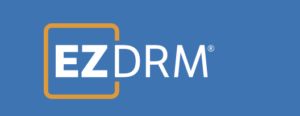
EZDRM: Creating and Maintaining the Content Protection Envelope
Digital rights management (DRM) technology helps to enforce the business rules of a video service provider and the rights of the ultimate content owners. And while protecting your business model with DRM is essential, it absolutely shouldn’t be stressful to accomplish.
Enter New York-based EZDRM, bringing a 20-year-plus track record in the video security business, and a team able to offer deep business and technical expertise on securing and enhancing revenue streams.
Olga Kornienko, co-founder and COO of EZDRM, spoke with MESA about the commercial protection opportunities available today, how the pandemic impacted her company’s business, and why DRM will always be a necessity in media and entertainment, no matter the format.
MESA: What was the impetus for EZDRM, how did the company first come about nearly 20 years ago?
 Kornienko: The insights that lead to creation of EZDRM came from the founders’ involvement in an earlier streaming video business. At that time, in 2002, DRM was even more of a black art than it seems today. It was obvious that an opportunity existed for an enterprise that simplified the application of DRM, offering benefits to those in the new world of streaming video, without sacrificing any of the business flexibility required.
Kornienko: The insights that lead to creation of EZDRM came from the founders’ involvement in an earlier streaming video business. At that time, in 2002, DRM was even more of a black art than it seems today. It was obvious that an opportunity existed for an enterprise that simplified the application of DRM, offering benefits to those in the new world of streaming video, without sacrificing any of the business flexibility required.
From that point, EZDRM built its business and industry reputation on a solid foundation of easy-to-use cloud-centric DRM solution, tailored to meet customer security needs, no matter what device a video service needs to reach.
EZDRM robustly addresses the content protection challenge without getting in the way of an authorized viewer’s use.
MESA: What does EZDRM offer in the areas of digital rights management (and DRM as a service) that’s unique in the business?
Kornienko: EZDRM is one of the original companies to make security the core of their business. In fact, our specialist approach to DRM was originally and remains to this day the sole focus of the company. We coined the term DRM-as-a-Service (DRMaaS) and, over the last 20 years, have seen the streaming video landscape grow from early innovation to the major force driving news and entertainment today. At the same time, the landscape for video consumption has become much more technically diverse and complex, and the security threats have evolved and grown.
We consider that our singular focus on making security easy to use, easy to integrate, and easy to afford is a unique industry proposition.
MESA: EZDRM has been around since DVD was dominant. What have been the biggest DRM challenges the company has had when it comes to securing today’s streaming-first reality?
Kornienko: Video files 20 years ago were unmanageably huge compared to the typical storage and bandwidth available on typical home computer. That whole equation has changed beyond recognition — a high quality video camera and communication device is now in the palm of nearly everyone’s hand. These technological advances have made sharing easier, but that has only sharpened the need for commercial security mechanisms. As part of the response to Internet video becoming mainstream, the technical approach to DRM has changed and the implementation has evolved to become a core concern of the major tech players — to the point where video security is now an integrated part of all the major browser offerings.
The constant is that DRM has been — and will remain — a basic requirement for a commercial video service because:
• Content owners require protection of the intellectual property rights embedded in their video assets when rights are negotiated to deliver that content as part of a video service.
• Commercial video services require an ability to switch on/off viewing rights to an individual or a device to build a business model around payment for the service. If consumption can’t be metered and controlled, then payment models can’t be enforced.
• Protection of video streams during delivery helps ensure that other forms of monetization, such as ad insertion, remain effective and secure.
MESA: What are some of EZDRM’s favorite use-case examples over the years (that you can share), where media and entertainment companies made especially good use of your services?
 Kornienko: The world of security is never a one-size-fits-all business. Although we believe firmly in our cloud-centric DRMaaS architecture, there are often specific customer configurations that require special architectural treatment to combine the benefits of the foundation cloud services with additional functions — for example when the real-world constraints of clients are critical and where the Internet is not as universal and consistent as the metropolitan U.S.
Kornienko: The world of security is never a one-size-fits-all business. Although we believe firmly in our cloud-centric DRMaaS architecture, there are often specific customer configurations that require special architectural treatment to combine the benefits of the foundation cloud services with additional functions — for example when the real-world constraints of clients are critical and where the Internet is not as universal and consistent as the metropolitan U.S.
A specific case we can cite here is of an island-based Telco delivering a new video service that led to the development and deployment of a cloud-hybrid variant configuration. We now call the configuration option DRMaaS Cloud-On-Prem. An innovative DNS configuration for the Telco network enables client devices on the Island network to take full advantage of local high bandwidth and low latency to the locally hosted EZDRM service instance, while enabling a fallback service that is supported directly by the EZDRM world-wide cloud infrastructure.
This custom approach has enabled our customer to provide a rich, reliable video service that is not fully dependent on connections to the global infrastructure but takes full advantage of such connections when they are required.
MESA: How has the pandemic impacted EZDRM’s business, in what ways has the company adjusted?
Kornienko: The streaming world clearly kicked into high gear over the last two years. This significantly boosted the company base of information and entertainment services providers, but also demonstrated that offering flexibility in business models can pay dividends for both the operator and the DRM service provider. Some of our customers were able to change business models and monetization schemes without needing to make any changes to the content itself.
The experiences have certainly reinforced one of our core brand values — being straightforward and transparent in our relationships.
Additionally, the applications of DRM also diversified – for example protecting virtual event content and niche film festivals. It seems that a broader range of commercial and non-profit organizations also recognized the need for protected content distribution—and came looking for a vendor who could offer that in a simple, but effective form.
MESA: What’s next for EZDRM, what advances or added services can we expect from the company during the next two decades?
 Kornienko: EZDRM has been in the business for a 20-year period, over which the industry has changed beyond recognition — who can possibly say what the next twenty years will bring?
Kornienko: EZDRM has been in the business for a 20-year period, over which the industry has changed beyond recognition — who can possibly say what the next twenty years will bring?
As the competitive race between commercial streaming services heats up, it’s likely that live events – particularly live sports events – will have an increasingly pivotal role to play in the competitive profile of video streaming service.
Today, Live sports are a dominant part of the revenue model for legacy video broadcasters — and with a substantial shift of these revenue streams to the online world would bring an even more critical focus on the concerns of robust service security.
The commercial opportunities here are boundless — from HD to UHD to VR and beyond. But whatever the consumption format, security needs to be the priority in planning and at the core of business mechanics for every video service launched. This imperative should be seen for what it is – the critical connection to the management of revenue streams and the enforcement of service business models.
To learn more about EZDRM and how we can simplify your DRM solution, please visit our website.
